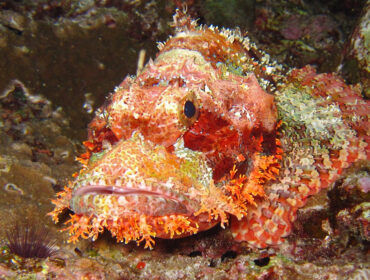Come the months of Summer, July and August and along with the talk of sun, sand and beaches comes the invasion of the jelly like orbs, the cause of fear among each goers and divers alike.
Sightings of these complex and kind of strange marine invertebrates often triggers an unjustifiable fear that has for long denied beach goers the fun of swimming and has turned them against the creature. However, jellyfish are one of the most misunderstood creatures of the sea having gained a reputation of being dangerous due to myths about it’s ways and sting. Here’s a look at some simple facts that might change people’s misconceptions of this fascinating creature.
Members of the phylum Cnidaria, jellyfish poss one of two body forms. It displays radial symmetry with body parts radiating from a central axis. This symmetry allows jellyfish to respond to food or danger from any direction.Instead of a brain, “true” jellyfish possess an elementary nervous system, or nerve net, which consists of receptors capable of detecting light, odor and other stimuli and coordinating appropriate responses. Jellyfish named for their jelly-like body resembling an empty plastic bag come in a wide variety of sizes, shapes and colors. Most are semi-transparent or glassy and bell-shaped, measuring less than an inch to over a foot across the bell, although some may reach 7 feet. Some species of jellyfish posses a stinging structure in the form of nematocysts which are generally concentrated on the tentacles or oral arms of the jellyfish. This venomous apparatus although toxic are primarily a jellyfishes defence and means of hunting for prey. While in most species the stings usually paralyze or kill only small creatures, some posses doses that are harmful to humans also. However, jellyfish do not “attack” humans.
Jellyfish have very little ability to push themselves along the water by any means and mostly drift along the water along with currents. Contrary to belief that jellyfish swim underwater waiting for their prey, they stay close to the surface making them easy to identify and avoid. If you happen to come into contact with one, it is not because they were aiming for you! Contact or touching the orb like structure of a jellyfish doesn’t present any danger. It’s when one comes in contact with it’s tentacles where they can get stung.
Some jellyfish species are completely harmless, such as the Comb jellyfish, which has no tentacles or stinging cells. Some others, however, such as Moon jellyfish, seat nettles and box jellyfish can sting you. Depending on the severity of the sting and the type of jellyfish sting effects can range from no effect to extreme pain to death. Box jellyfish stings can be deadly while Scyphozoan jellyfish stings are often uncomfortable though not generally deadly. Remedies for jellyfish stings are plenty, but only some of them are effective, and others are myths. It’s often believed that rubbing sand on a sting helps. This is completely untrue, and only makes the sting worse by possibly wounding your skin, causing the toxins to go deeper, causing possible infections.Vinegar does help with box jellyfish stings however treating jellyfish stings with urine doesn’t always help because it actually causes some types of jellyfish to fire off even more toxins. Warm water is highly recommended, and a commercial sting remedy would be the safest option. A good way of avoiding jellyfish encounters instead of panicking is to swim away or if one gets too close simply hold the animal from its body and redirect its course.




